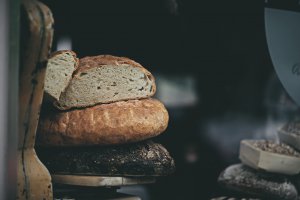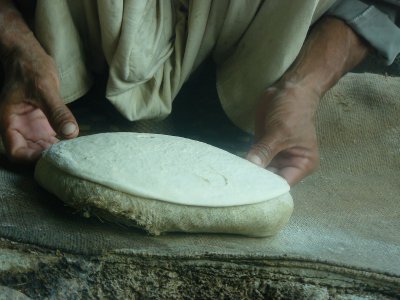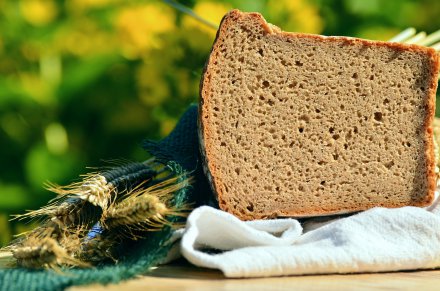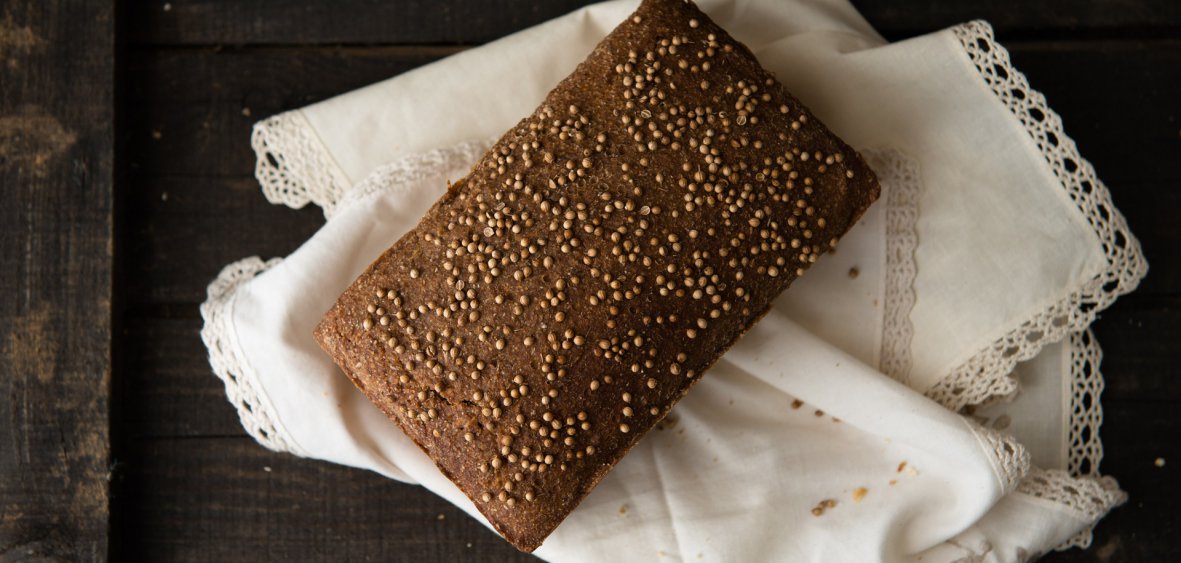 The superiority of bread baked at home, over that bought even in the best bakery, is obvious. Independent baking is sure about its composition. We know that our sourdough is a natural product and not a powdered substance. Besides, there is a certain magic in the smell of bread, which spreads around the house. For this pleasure and confidence at the same time it is worth trying!
The superiority of bread baked at home, over that bought even in the best bakery, is obvious. Independent baking is sure about its composition. We know that our sourdough is a natural product and not a powdered substance. Besides, there is a certain magic in the smell of bread, which spreads around the house. For this pleasure and confidence at the same time it is worth trying!
Natural sourdough is the best neutralizer of phytins, i.e. unfriendly components of wholegrain flour.
In order to prepare bread, you need it:
-1 kg wholegrain spelt flour (type 2000),
- 1 kg of wholemeal rye flour type 2000 per starter.
- Acid for wholemeal rye flour is the best, but if you don't have one, you can use any wholemeal flour (spelt, buckwheat flour).
Preparation of the starter
 Pour half a glass of rye flour into a 1 litre jar scalded with boiling water. Add half a glass of water. Mix the whole with a wooden spoon (also steaming with boiling water). Cover the jar with a cloth.
Pour half a glass of rye flour into a 1 litre jar scalded with boiling water. Add half a glass of water. Mix the whole with a wooden spoon (also steaming with boiling water). Cover the jar with a cloth.
The next day we devote to feeding the sourdough: add half a glass of flour and half a glass of water to the mixture.
We repeat this action for another 2 days.
After four days of feeding the sourdough, wait until the last added part of the flour ferments and turn off the jar. Set aside the sourdough in the fridge for 2 - 3 days. Properly prepared sourdough has a creamy texture and a slightly acidic smell.
Take the sourdough out of the fridge the day before baking bread. In this way we will give him time to wake up. When it reaches room temperature, add 3 tablespoons of flour and 3 tablespoons of water. The acid should start working again and blisters should appear on the surface of the mass.
Beginning
Put 300 g of sourdough into a large bowl. Add half a kilo of spelt flour and add half a litre of cold water. Stir with a spoon and set aside for half a day to work, previously covering the slurry with a cloth.
The remaining sourdough can be "fed" with another portion of flour and water. Once it has fermented, put the sourdough back into the fridge.
Making the dough
 After 12 hours of leavening, add the remaining spelt flour and half a glass of water. Add a spoonful of sea salt or Himalayan salt to the dough, you can also add a spoonful of honey. If we want to enrich the bread with nutritional values, let's add pumpkin seeds, sunflower seeds or linseed. Knead the dough with your hand or mixer, where it will not easily leave the bowl and hand.
After 12 hours of leavening, add the remaining spelt flour and half a glass of water. Add a spoonful of sea salt or Himalayan salt to the dough, you can also add a spoonful of honey. If we want to enrich the bread with nutritional values, let's add pumpkin seeds, sunflower seeds or linseed. Knead the dough with your hand or mixer, where it will not easily leave the bowl and hand.
Baking bread
The dough is enough to fill two 25 x 11 cm cakes. Silicone moulds do not require any additional action, we can immediately put the dough in them. Insert baking paper into metal gutters.
After filling the moulds, leave the dough to rise. The time it takes to grow up is 2 - 5 hours.
The next step is to diagonally cut the dough with the sharp end of the knife. We do it in such a way that the incision is not too deep. Moisten the top of bread gently with water and sprinkle with grain. Place the moulds in the oven preheated to 200oC.
Pour some water onto the lower baking tray, which will not allow the bread to dry out too much. Bake for 45 - 55 minutes (without thermo circulation). The baking time must be shortened accordingly when the thermo circuit is switched on.
 The advantage of homemade bread is its long-lasting freshness. Bread can be cut and frozen. Once removed from the freezer, it does not need to be heated in the oven. It will itself reach room temperature.
The advantage of homemade bread is its long-lasting freshness. Bread can be cut and frozen. Once removed from the freezer, it does not need to be heated in the oven. It will itself reach room temperature.
At the end let's go back to the sourdough left in the fridge. Unless we bake bread regularly every 2 - 3 days, we must remember to feed the sourdough once a week with the amount of flour and water it deserves.















